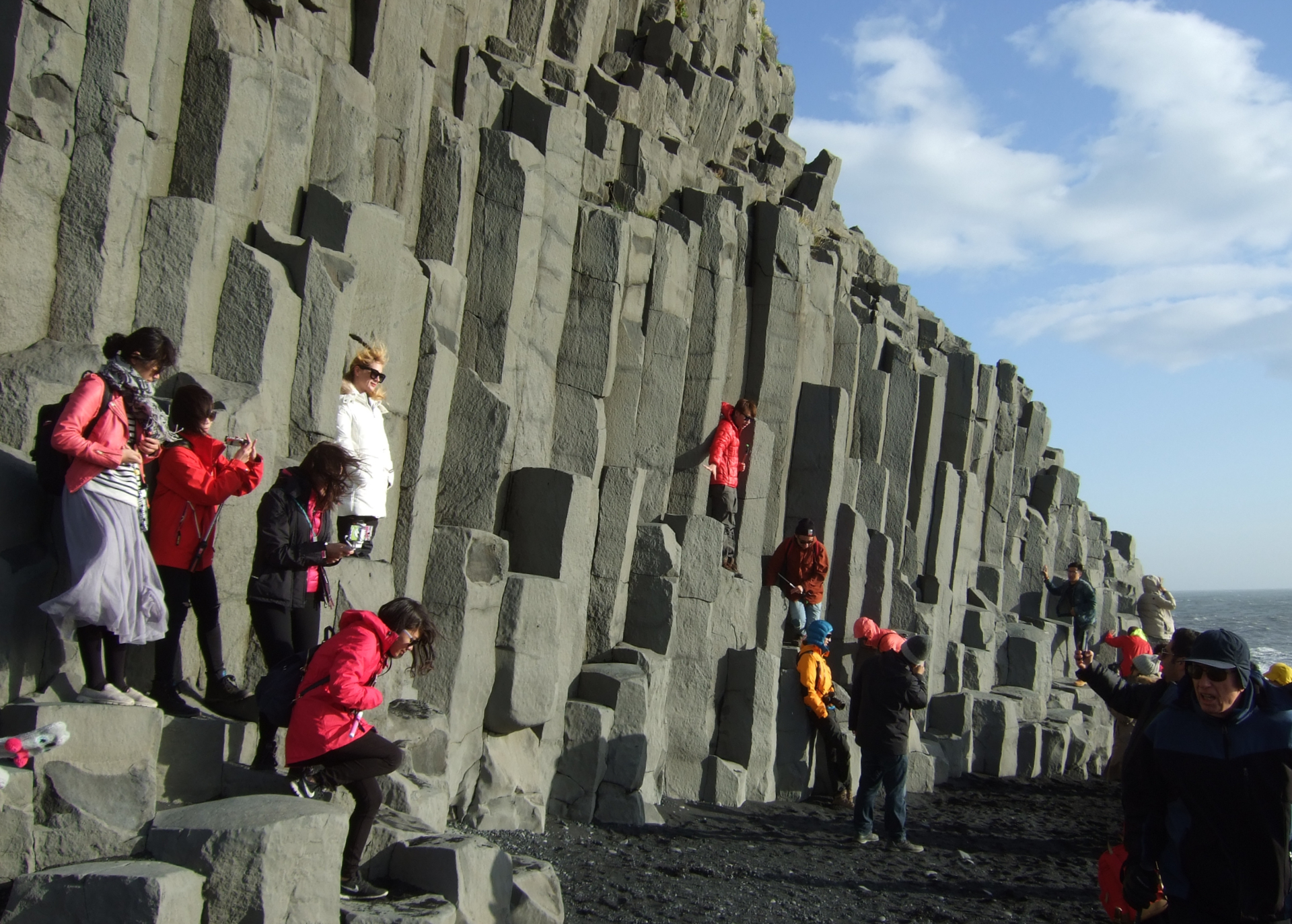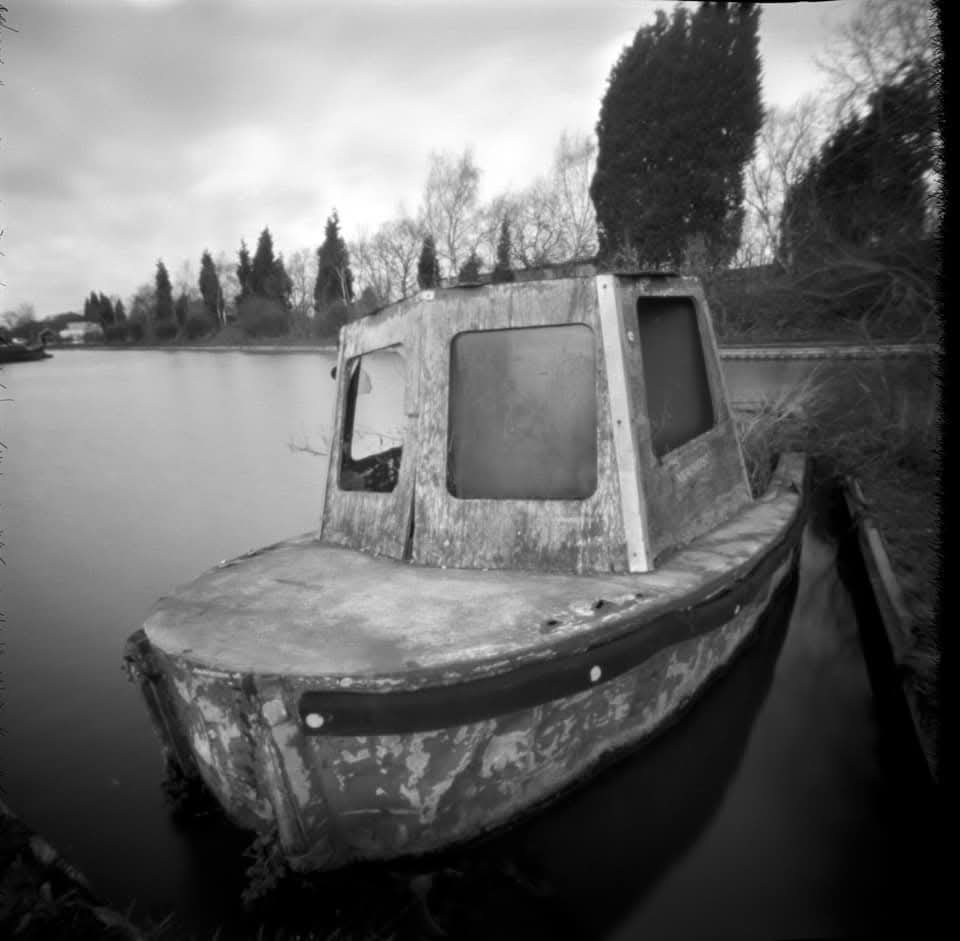Cliff climbing, anyone? These volcanic basalt columns on Reynisfjara Beach on Iceland’s southern coast are one of the country’s several answers to northern Ireland’s more well-known “Giant’s Causeway.”
As you see, it’s a popular place for unique selfies. Columns like these often occur where molten lava cools in water and contracts into geometric prisms similar to dried mud. They can have anywhere from 4 to 8 sides.
Of course, climbing them is risky. But the columns aren’t the biggest danger here. That honor goes to the deceptively placid-looking ocean at the right side of the photo. It’s a serial killer.
Don’t Turn Your Back!
Here, the ocean is unusually deep right up to the black-sand shore. Shaped like a funnel, the beach also concentrates and accelerates in-rushing water into massive jets that knock people off their feet, rebounds them off the cliffs, and washes them down the steeply ramped sand into the icy deep. Mild waves are instantly magnified into towering rogues– called “sneaker waves” by Icelanders– and people have even been washed off the cliffs.
It’s happened many times: June 2022, November 2021, January 2017 (nine months before our visit), and before them, in May, 2007, when a 75-year-old woman wandered too close to the water. There’s a terrifying video near the top of the page in the first link above. Three people on a similar beach (near Portsall, Western France) nearly died. They were extraordinarily lucky (though the clip’s title wrongly implies that they drowned).
A 1.5-hour walk from these cliffs along Reynisfjara beach brings you to the equally spectacular and dangerous Hálsanefshellir Cave. People have been washed into the ocean there as well. And the basalt columns in the cave’s roof and walls can break off and fall (100 tons of them in one 2013 event). So constant vigilance is necessary here too.
But don’t let your guard down as you walk the long, straight sands between these locations. This instagram video shows how easily the sea along the entire beach can knock large groups of people off their pins. (NOTE: If a login window appears, it went away when I clicked the screen outside it.) With numerous such close calls, there’s no safety in numbers here!
New Signage, But Dangers Remain
Near where I stood when I shot the opening photo with a Fuji F31fd digicam, I noticed only one small warning sign that said “Don’t Turn Your Back on the Water!” And of course, many tourists either didn’t notice it or failed to take it seriously. While they shot selfies right at the water line – backs turned to the ocean – an Icelandic tour-bus driver standing beside me just shook his head and muttered “Warning them does no good.”
But as you saw in the earlier Reynisfjara Beach link, better warning signs in three languages have been added. Warning lights too:
- Green– “OK to enter, but remain cautious”
- Yellow– “Don’t enter the yellow zone”
- Red– “Go no further. Stop right here”
The sea, however, doesn’t care about signs or lights. Visitors to beaches like these would be wise to hang back from the water line and stay off the columns.
–Dave Powell is a Westford, Mass., writer and avid amateur photographer.
Share this post:









Comments
Ibraar Hussain on Don’t Turn Your Back on the Water! – One-Shot Story
Comment posted: 04/06/2025
and it seems as if you're having a Game of Thrones trip!!
Comment posted: 04/06/2025
Comment posted: 04/06/2025
Comment posted: 04/06/2025
Comment posted: 04/06/2025
Comment posted: 04/06/2025
Tony Warren on Don’t Turn Your Back on the Water! – One-Shot Story
Comment posted: 06/06/2025
Comment posted: 06/06/2025
David Pauley on Don’t Turn Your Back on the Water! – One-Shot Story
Comment posted: 06/06/2025
Comment posted: 06/06/2025
Gary Smith on Don’t Turn Your Back on the Water! – One-Shot Story
Comment posted: 07/06/2025
Comment posted: 07/06/2025